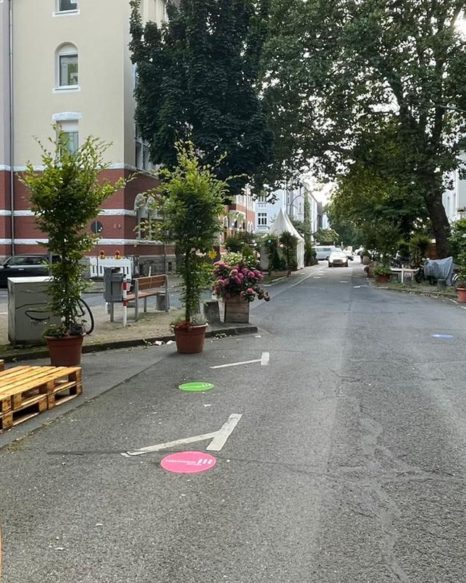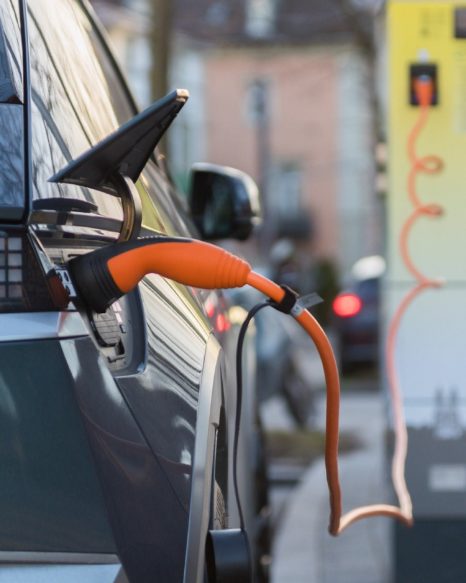A public square, not an intersection - more amenity value in public space as a driver of the transport transition: Results of a temporary transformation

Especially in cities, public space is a scarce resource, and it is claimed by different user groups. In the inner city of Berlin, less than half of the households have a car, so the majority of daily trips (82%) are made by walking, cycling, or using public transport (source: SrV 2013). The question therefore arises as to how public space can be designed in the context of the transport transition to benefit as many people as possible and to promote active mobility.
In order to increase the urban quality of stay, to create public spaces for city dwellers and to enable health-promoting mobility, an intersection in Berlin Charlottenburg was transformed into a city square for five weeks in autumn 2020 as part of an EXPERI experiment. Through participatory formats and joint design activities, the neighbourhood was encouraged to contribute and implement its own ideas and design wishes. The temporary transformation of the public space was accompanied by qualitative and quantitative methods. The results are presented in detail on the DLR website .
Opinions on the temporary town square and the use of public space
With regard to the general division of public space, the respondents in a first survey wave all agreed: pedestrians should be given the most space. Thus, 79% of the respondents stated that they would allocate the most space to pedestrians, which is in line with a survey conducted by the ADAC in large cities. In this survey 42% of respondents fully agreed that space for traffic in the city should be redistributed in favour of pedestrians and cyclists. A further 34% partly agreed with this statement (ADAC 2020).
When it came to the concrete transformation of the intersection into a city square for a test period of five weeks, opinions varied: 42% of the respondents stated a positive attitude and 13% a neutral one. On the other hand, 43% of the respondents had a negative view of the temporary city square, and 2% had not (yet) formed an opinion (see figure). If at least one car was available in the household, the opinion on a temporary town square was less positive than among households without their own car. Nevertheless, almost half of the respondents with a car in the household had a positive or neutral opinion of the town square. The difference in opinion according to age group is particularly interesting. The older the respondents were, the less positive their opinion of the town square. In the 18-29 age group, more than two-thirds of the respondents had a positive opinion of the town square, whereas in the 75 and older age group, less than one-third had a positive opinion. This makes it clear that when redesigning the city, the needs of older people in particular should also be taken into account to create spaces that can be used by a variety of people within the framework of intergenerational urban development.
Further results on the use of the temporary city square, design ideas for a permanent city square and the concerns of the residents as well as the background of the survey can be found on the DLR website.












